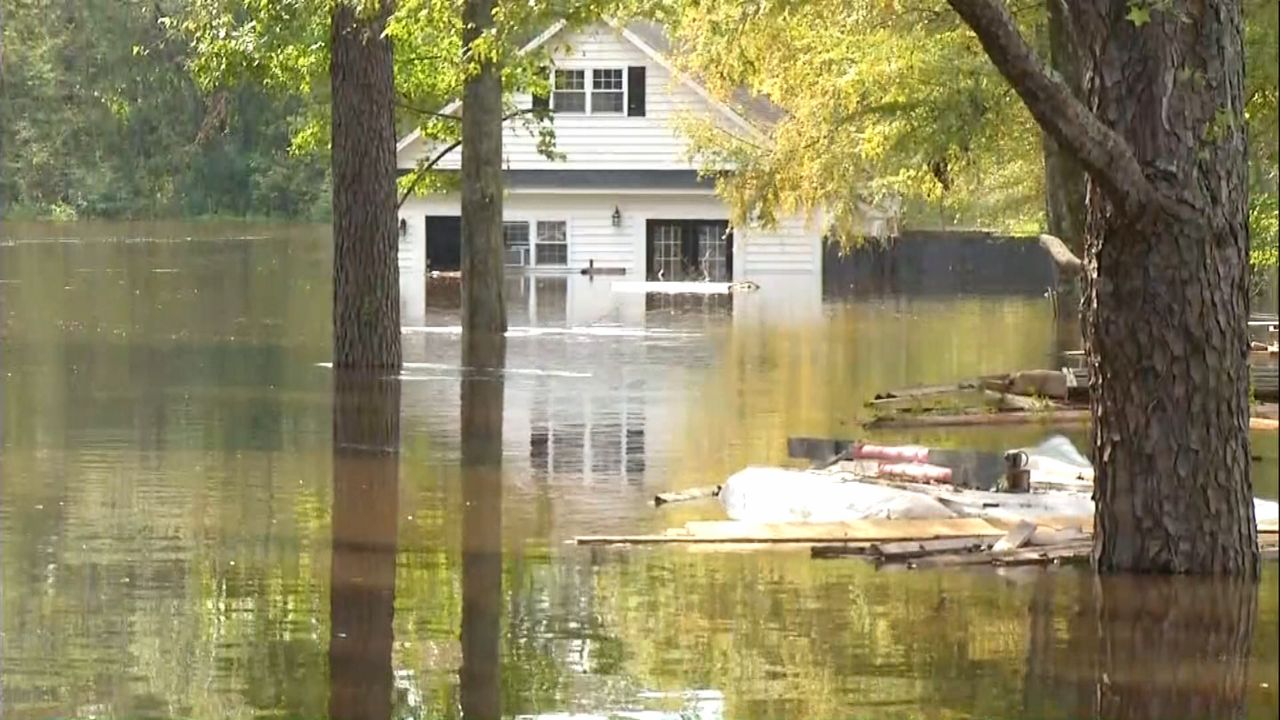Wednesday marks four years since Hurricane Florence made landfall in North Carolina.
The storm came inland near Wrightsville Beach as a Category 1 hurricane on Sept. 14, 2018. At one point, Florence was a Category 4 storm over the Atlantic. But it weakened before making a direct hit to North Carolina.
Most residents in southeastern North Carolina probably do not remember the winds with Florence, but many definitely remember the rain.
Florence slowed down as it came inland and stalled for a while, producing up to 3 feet of rain.
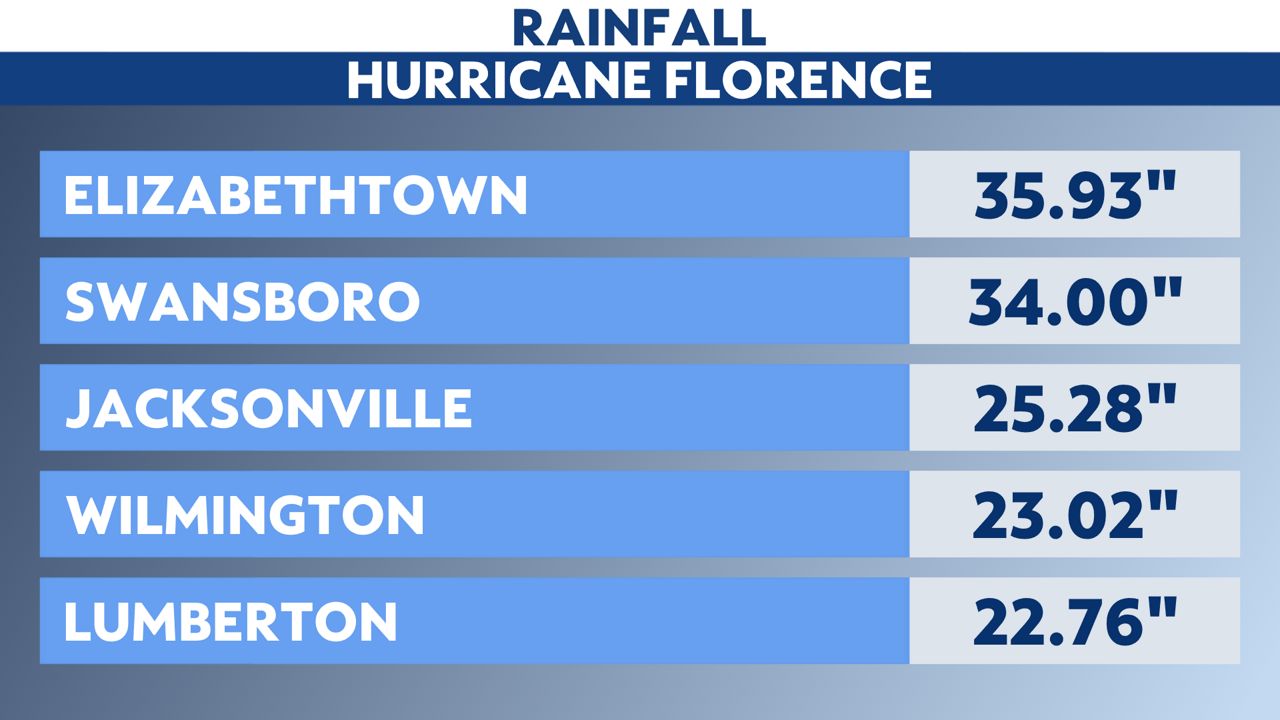
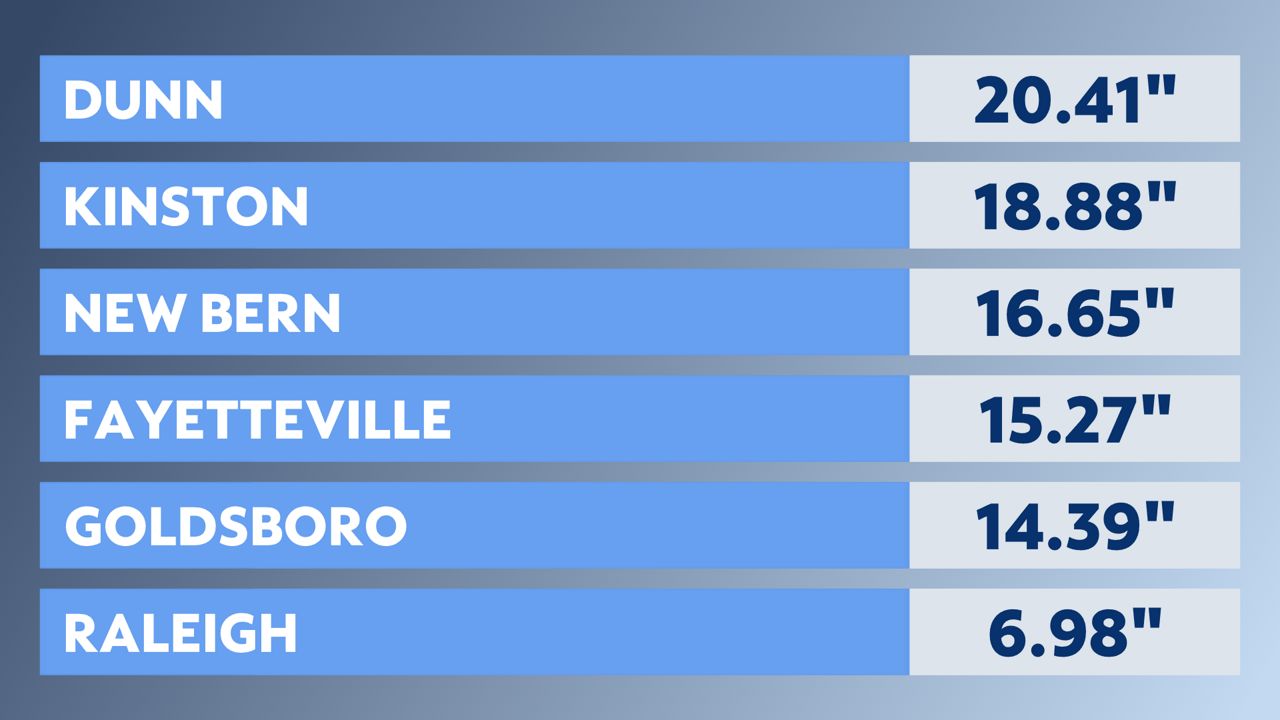
This resulted in catastrophic flooding, which impacted some of the same areas that had been devastated by flooding from Hurricane Matthew just two years prior.
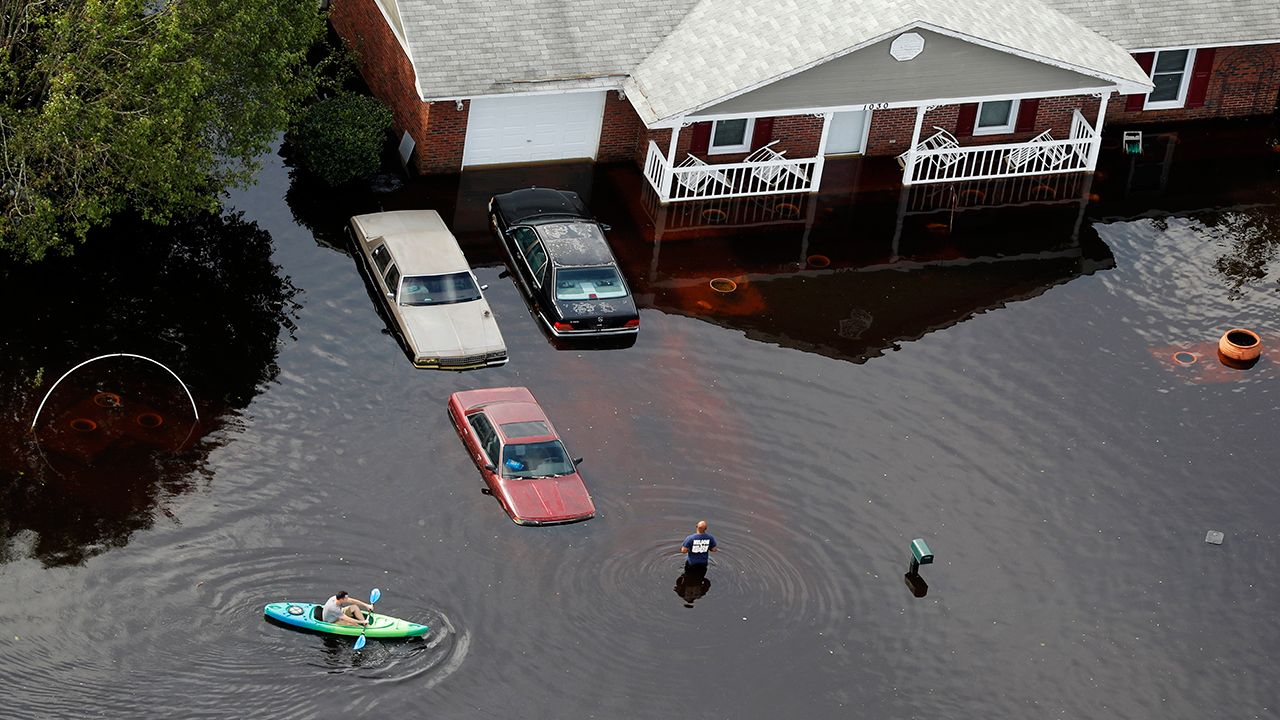
At one point, every major highway in eastern North Carolina had to be closed due to flooding, including sections of I-40, I-95 and U.S. 70.
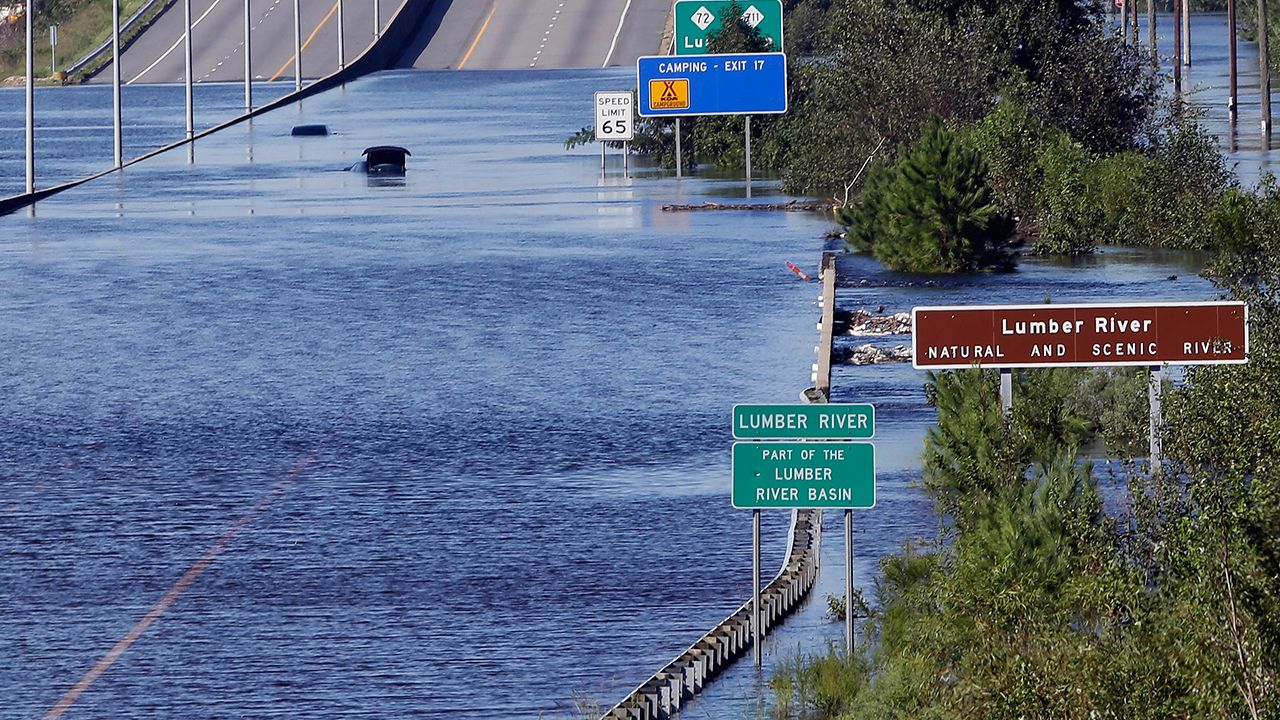
The City of Wilmington became completely cut off from the rest of the state for several days due to the flooding.
Florence's rains made an already wet year the wettest on record in the state. Wilmington ended the year with over 100 inches of rain.
According to statistics from the State Climate Office, 45 deaths were attributed to Hurricane Florence just in North Carolina. That makes Florence the fourth-deadliest hurricane on record for the state behind the unnamed storms in July 1916 and September 1883 and Hurricane Floyd in 1999.
Damage from Florence in North Carolina was estimated at $17 billion. That's more than the combined damage from Hurricanes Floyd in 1999 and Matthew in 2016.
